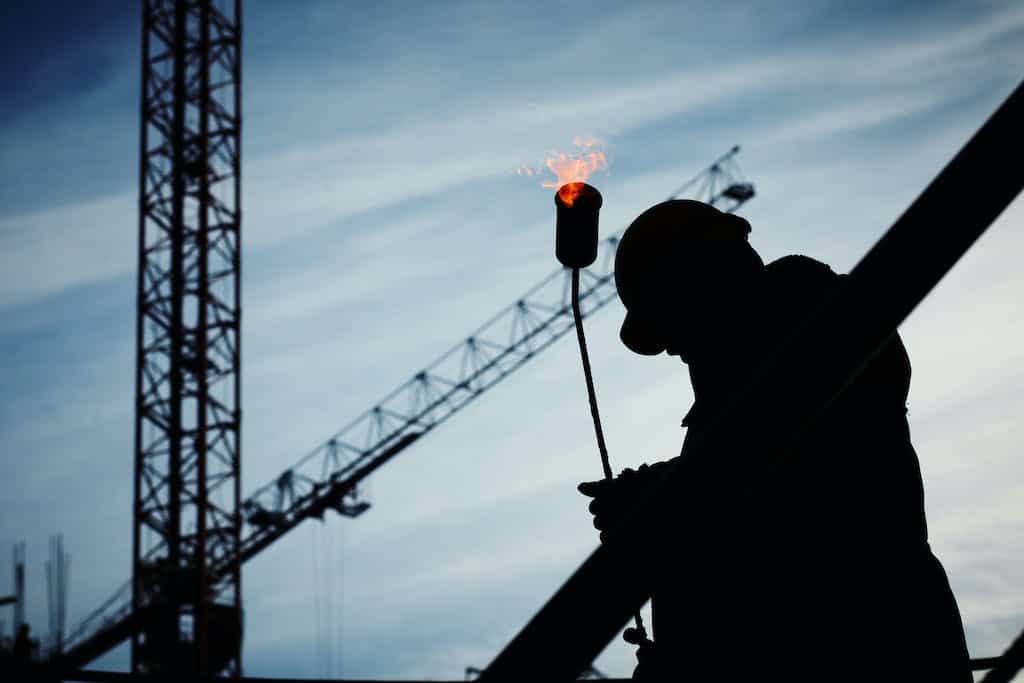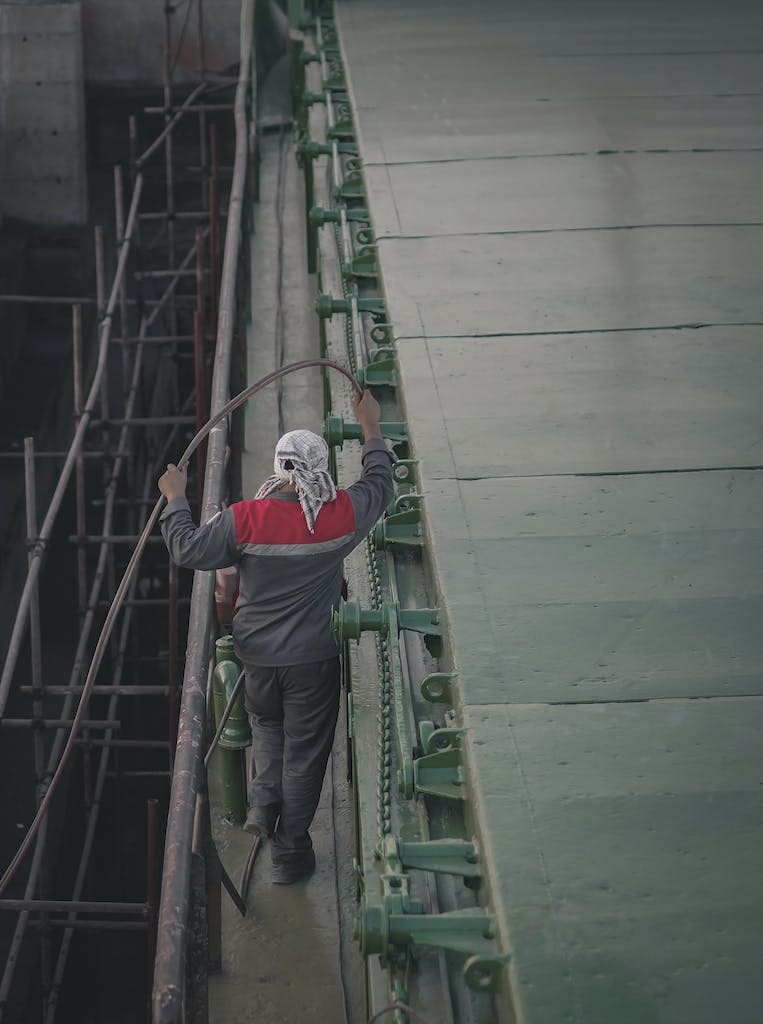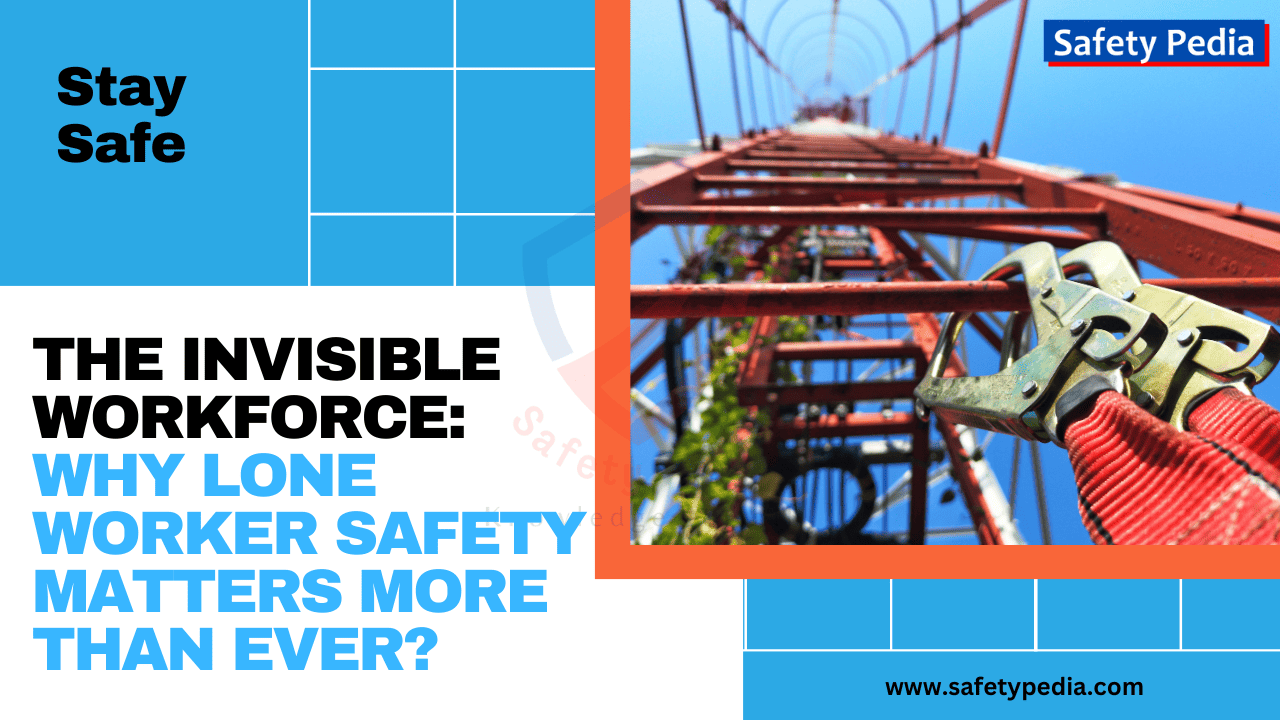In today’s fast-paced world, individuals are often required to work alone in various industries and environments. While this offers flexibility and autonomy, it also poses potential risks and challenges. This article explores strategies and measures that can be implemented to promote safety for lone workers and mitigate the associated risks.
The safety and well-being of lone workers should be a top priority for companies across all sectors. Understanding the unique challenges they face, such as lack of immediate support and increased vulnerability to accidents or emergencies, is crucial in developing effective risk management strategies. From implementing adequate training programs to leveraging technology for communication and monitoring, there are several approaches that companies can take to safeguard lone workers. By adopting proactive safety measures and fostering a culture of awareness and support, organizations can significantly reduce the risks these individuals face on a daily basis.
This article will get into some of the key strategies and best practices for promoting for lone workers. Whether you are an employer or a lone worker yourself, the insights shared here aim to empower you with actionable steps to enhance safety and well-being in lone work environments.

Understanding the risks of lone workers
Lone workers, by definition, are individuals who work without close or direct supervision. They may work in remote locations, outside regular business hours, or in high-risk industries such as construction, healthcare, or transportation. The absence of immediate support and increased vulnerability to accidents or emergencies are some of the unique challenges faced by lone workers.
Working alone increases the risk of accidents going unnoticed, delays in accessing medical assistance, and exposure to potential violence or harassment. Furthermore, lone workers may also face challenges in managing their own stress levels and maintaining a healthy work-life balance due to their isolated working conditions.
To effectively mitigate these risks, it is essential to understand the specific challenges faced by lone workers and develop strategies tailored to their needs.
Hazards for Lone Workers
- Violence or aggression from customers, clients, intruders, etc. Lone workers may be more vulnerable to threats or intimidation, affecting their well-being and safety.
- Lone workers in isolated areas or dealing with cash are at increased risk of theft and violence.
- Lack of supervision or support in case of emergencies or accidents
- Isolation or stress from working alone or in remote locations
- Exposure to hazardous substances, extreme temperatures, noise, etc. Lone workers dealing with chemicals, fumes, or other dangerous substances lack immediate assistance in case of exposure.
- Fatigue or boredom from long or irregular working hours
- Evacuating and responding to emergencies alone is far more challenging and increases the risk of injury or entrapment.
Violence and Security Hazards:
- Robbery and assault: Lone workers in isolated areas or dealing with cash are at increased risk of theft and violence.
- Work-related violence: Some professions, like healthcare or social services, carry inherent risks of aggression from clients or patients.
- Threats and harassment: Lone workers may be more vulnerable to verbal threats or intimidation, affecting their well-being and safety.
- Working in unsafe environments: Lone workers in remote areas or high-crime neighborhoods face elevated security risks.
Psychological and Health Hazards:
- Stress and anxiety: Working alone can lead to increased stress, anxiety, and isolation, negatively impacting mental health.
- Work-related fatigue: Without colleagues to share workload or monitor breaks, lone workers are more likely to experience fatigue, increasing accident risk.
- Sudden illness or medical emergencies: Without immediate assistance, medical emergencies for lone workers can be life-threatening.
- Lack of social support: The absence of colleagues can lead to feelings of loneliness, impacting morale and potentially motivation.
Physical Hazards:
- Adverse weather conditions: Lone workers outdoors are vulnerable to extreme temperatures, storms, or other environmental dangers.
- Exposure to hazardous materials: Lone workers dealing with chemicals, fumes, or other dangerous substances lack immediate assistance in case of exposure.
- Falling objects or equipment: Working alone increases the risk of being struck by falling objects, especially in construction, maintenance, or warehousing.
- Electrical hazards: Working with electrical equipment alone increases the risk of shocks, burns, and electrocution.
- Musculoskeletal disorders (MSDs): Caused by repetitive tasks, awkward postures, and heavy lifting, particularly common in manual labor jobs.
- Slips, trips, and falls: These are the most common workplace injury, and even more dangerous for lone workers who may not have immediate help.
- Working with machinery: Operating machinery without a second person carries heightened risks of entanglement, crushing, and other injuries.
- Fire and emergencies: Evacuating and responding to emergencies alone is far more challenging and increases the risk of injury or entrapment.
Additional Concerns:
- Unforeseen circumstances: Lone workers may be more vulnerable to unexpected events like natural disasters or equipment failures.
- Limited communication: Poor reception, lack of access to communication devices, or relying solely on personal phones can hinder help-seeking in emergencies.
- Training and supervision: Lone workers may not receive adequate training or supervision specific to their solo work challenges.
- Lack of awareness: Employers and lone workers themselves may underestimate the inherent risks of working alone and fail to implement proper safety measures.
Who are at risk of lone work?
Professional Services:
- Truck drivers: Often spend long stretches on the road alone.
- Delivery drivers: May face isolation and potential hazards depending on location.
- Couriers: Similar to delivery drivers, but often on foot or bicycle, increasing vulnerability in certain areas.
- Bus drivers: While passengers are present, drivers often have limited interaction and may need to handle emergencies alone.
- Security guards: Patrol areas alone and may handle potentially dangerous situations.
- Field service technicians: Work independently on repair or installation tasks at various locations.
- Gas station attendants: Work alone, particularly during night shifts or in less populated areas, potentially increasing security risks.
- Mobile Therapists: Work alone in clients’ homes or community settings, encountering vulnerable individuals who may pose unique challenges.
- Ambulance Drivers: Operate emergency vehicles alone, facing demanding driving conditions and high-pressure situations.
- Door-to-Door Vaccination Staff: Face potential security risks like aggressive dogs, trespassing, interacting with vulnerable individuals or hostile reactions to vaccination campaigns.
- Home healthcare aides: Provide care to patients in their homes, usually without immediate supervision.
- Freelance writers, editors, and designers: Work remotely with minimal face-to-face interaction.
- Inspectors and auditors: Travel to different sites and conduct assessments independently.
- Social workers: Visit clients in their homes or community settings, potentially encountering vulnerable individuals or challenging situations.
- Oil rig workers: Work in isolated and potentially dangerous environments, facing risks like falls, equipment malfunctions, and extreme weather.
Trades and Construction:
- HVAC technicians: Often work alone on installation or repair jobs in industry, in homes or businesses.
- Electricians: Work alone on electrical systems, facing potential shock hazards and other risks.
- Plumbers: Operate independently in homes or businesses, encountering potential hazards like confined spaces and water leaks.
- Carpenters: Work on projects solo, using tools and equipment that pose safety risks if not handled properly.
- Construction workers: May operate heavy machinery or work at heights alone depending on the project.
- Utility technicians: Maintain and repair power lines, often in remote areas.
- Landscapers and gardeners: Often work on client properties alone, using potentially dangerous tools.
Transportation:
- Taxi and rideshare drivers: Work alone with passengers, potentially facing security risks.
- Bus drivers: Drive routes with minimal interaction, needing to manage situations solo.
- Train conductors and locomotive engineers: Operate trains independently on long stretches of track.
- Ferry captains and crew: Work onboard vessels away from land, requiring self-reliance.
Farming and Agriculture:
- Ranchers and farmers: Often oversee large properties and work with animals alone.
- Forestry workers: Harvest timber and maintain forests in potentially isolated areas.
- Agricultural laborers: May work in fields or orchards with limited supervision.
Service & Support:
- Home healthcare aides: Provide care to clients in their homes, often facing physical demands and potential risks related to the client’s condition.
- Social workers: Visit clients in their homes or community settings, potentially encountering vulnerable individuals or challenging situations.
- Travel guides & tour operators: Lead tours in unfamiliar areas, potentially facing security risks, cultural challenges, or needing to handle emergencies solo.
- Pest control technicians: Work independently in various environments, potentially encountering hazardous chemicals or dangerous insects/animals.
- Meter readers: Walk or drive alone, accessing private properties, potentially facing security risks or animal encounters.
- Janitorial staff: Clean buildings or offices after hours, often working alone in potentially hazardous environments.
Creative & Technical:
- Freelance writers & editors: Work remotely, facing potential isolation and needing self-discipline to stay safe and healthy.
- Graphic designers & web developers: Similar to freelance writers, often working remotely with potential risks like repetitive strain injuries.
- Photographers & videographers: Work on location alone, potentially facing security risks, challenging environments, or hazardous situations.
- Field researchers & data collectors: Work in remote or isolated areas, potentially facing environmental hazards or needing to handle emergencies alone.
- IT consultants & technicians: Work independently on client sites, potentially facing security risks or needing to handle technical issues alone.
Other:
- Retail store workers opening/closing: May be alone during these times, facing potential security risks.
- Hotel night auditors: Manage hotel operations overnight, often with minimal staff presence.
- Lifeguards at remote beaches or pools: Patrol designated areas alone, responsible for public safety.
Remember: This list is not exhaustive, and individual job roles within these categories may involve varying degrees of lone work and associated risks.

Mitigating Risks for Lone Workers: Strategies for Promoting Safety for Lone Workers
In today’s fast-paced world, individuals are often required to work alone in various industries and environments. While this offers flexibility and autonomy, it also poses potential risks and challenges. This article explores strategies and measures that can be implemented to promote safety for lone workers and mitigate the associated risks.
The safety and well-being of lone workers should be a top priority for companies across all sectors. Understanding the unique challenges they face, such as lack of immediate support and increased vulnerability to accidents or emergencies, is crucial in developing effective risk management strategies.
From implementing adequate training programs to leveraging technology for communication and monitoring, there are several approaches that companies can take to safeguard lone workers. By adopting proactive safety measures and fostering a culture of awareness and support, organizations can significantly reduce the risks these individuals face on a daily basis.
Whether you are an employer or a lone worker yourself, the insights shared here aim to empower you with actionable steps to enhance safety and well-being in lone work environments.
Managing lone worker safety requires a multi-pronged approach, combining proactive planning, effective technology, clear communication, and ongoing support. Here are some key strategies:
- Risk Assessment: Identify potential hazards specific to the lone worker’s role and environment.
- Develop safety protocols: Based on the risk assessment, establish clear safety protocols and procedures for lone workers, including emergency response plans, communication protocols, and safe work practices.
- Job-specific Training: Provide comprehensive training on safety protocols, emergency procedures, and using any safety technology.
- Provide training: Train lone workers on the identified risks, safety protocols, and emergency procedures. Include training on situational awareness, self-defense techniques (if applicable), and using any safety technology provided.
- Communication Plan: Establish clear communication protocols for regular check-ins, reporting incidents, and requesting assistance. Ensure lone workers have access to reliable communication tools like mobile phones, two-way radios, or satellite communication devices, depending on the work environment.
- Emergency Response Plan: Develop a clear plan for responding to emergencies, including contact information for supervisors and emergency services.
- Personal Protective Equipment (PPE): Ensure workers have appropriate PPE based on the identified risks.
- Implement safety technology: Consider using wearable devices or apps for real-time location tracking, check-ins, and emergency alerts. Choose reliable technology with data privacy safeguards in place. Lone Worker Devices with features like:
- GPS tracking: Allows real-time location monitoring and emergency response.
- Two-way communication: Enables quick contact with supervisors or assistance teams.
- Panic buttons: Triggers immediate alerts in case of emergencies.
- Fall detection: Automatically detects falls and sends alerts.
- Environmental monitoring: Tracks conditions like temperature or air quality.
- Apps and Tools: Utilize digital tools for safety checklists, training modules, incident reporting, and communication.
- Regular Check-ins: Schedule regular check-ins with supervisors or colleagues to ensure well-being and address any concerns.
- Assign supervisors: Even in remote situations, designate supervisors responsible for lone workers’ health and safety. Establish clear communication channels and escalation procedures.
- Buddy systems: In certain situations, implement buddy systems where lone workers can check in with each other periodically.
- Offer emotional support: Recognize the potential for isolation and stress in lone workers. Provide access to mental health resources and encourage open communication about any challenges they face.
- Visible signage: Display clear signage notifying others that lone workers are present and outlining emergency procedures.
- Empower workers: Encourage lone workers to speak up about safety concerns and actively participate in improving safety procedures.
- Feedback and Improvement: Regularly gather feedback from lone workers to identify areas for improvement in safety procedures and technology.
- Data insights: Utilize data collected related to past lone worker behaviors, experiences, incidents, etc. from devices and wearables to identify trends and improve safety measures over time.
By implementing these strategies and tailoring them to specific contexts, organizations can significantly enhance the safety of their lone workers, preventing injuries, reducing stress, and fostering a more secure work environment.
The specific strategies you implement will depend on the specific risks and needs of your lone workers. Regularly evaluate the effectiveness of your safety measures and make adjustments as needed. Involve your lone workers in developing and implementing safety protocols to ensure their buy-in and participation.
Legal obligations for employers regarding lone worker safety
Employers have a legal obligation to provide a safe working environment for their employees, including those who work alone. Legislation and regulations vary across jurisdictions, but in general, employers are required to assess and control risks associated with lone working.
It is important for employers to familiarize themselves with the specific legal requirements in their jurisdiction and ensure compliance. By understanding their obligations, employers can take the necessary steps to protect the safety and well-being of their lone workers.
Assessing and identifying risks specific to lone workers
Before implementing any safety measures, it is crucial to conduct a thorough assessment of the risks specific to lone workers. This involves identifying potential hazards, evaluating the likelihood and severity of accidents or incidents, and understanding the specific challenges faced by individuals working alone.
Risk assessments should take into account factors such as the nature of the work being performed, the location and environment in which it is carried out, and any potential interactions with the public or clients. By identifying and understanding these risks, employers can develop targeted strategies to minimize them.
Developing a comprehensive lone worker safety policy
A comprehensive lone worker safety policy is the foundation of any effective risk management strategy. This policy should outline the responsibilities of both employers and lone workers, as well as the procedures and protocols to be followed in order to ensure safety.
The policy should clearly define what constitutes lone working, the specific risks associated with it, and the measures that will be taken to mitigate those risks. It should also outline the responsibilities of employers in providing suitable training, support, and communication tools for lone workers.
Providing adequate training and support for lone workers
Training is a crucial aspect of promoting safety for lone workers. Employers should provide comprehensive training to equip lone workers with the necessary knowledge and skills to identify and manage risks effectively.
Training programs should cover topics such as hazard identification, emergency response procedures, personal safety techniques, and stress management. It is also important to provide ongoing support and supervision to ensure that lone workers feel supported and have access to assistance when needed.
Utilizing technology and tools for lone worker safety
Advancements in technology have provided employers with a wide range of tools and solutions to enhance the safety of lone workers. From personal safety devices and mobile apps to GPS tracking systems and remote monitoring, there are various options available to improve communication and response times.
Employers should assess the specific needs of their lone workers and invest in appropriate technology and tools to enhance their safety. These solutions can provide immediate access to assistance, enable real-time monitoring of lone workers’ locations, and facilitate effective communication in case of emergencies.
Role of AI for Lone Work Safety
Artificial intelligence (AI) has the potential to significantly improve the safety of lone workers, but it’s not a silver bullet and its effectiveness depends on several factors. Here’s a breakdown of AI’s potential impact on lone worker safety:
Positive Impacts:
- Real-time monitoring: AI-powered systems can track location, activity, and vital signs of lone workers, triggering alerts and sending help in case of emergencies like falls, accidents, or sudden health issues.
- Automated check-ins: Regular check-ins via AI-powered apps or wearables ensure ongoing connection and prompt intervention if a worker fails to respond.
- Risk prediction and prevention: AI can analyze historical data and environmental factors to identify potential hazards and alert workers or supervisors proactively.
- Virtual training and assistance: AI-powered simulations can train workers on safety protocols and provide virtual support in case of emergencies or difficult situations.
- Improved communication: AI can facilitate communication between lone workers and support teams through voice assistants or wearable devices.
Challenges and limitations:
- Privacy concerns: Data collection and monitoring raise privacy concerns that need to be addressed transparently and ethically.
- Technology dependence: Reliance on technology can be problematic in areas with poor connectivity or equipment malfunctions.
- False alarms: Overly sensitive systems can trigger unnecessary alarms, leading to fatigue and distrust among workers.
- Limited scope: AI can’t replace human judgment and intervention in complex situations or provide emotional support.
- Cost and implementation: Implementing AI solutions requires investment and training, which may not be feasible for all organizations.
Here are some additional points to consider:
- The type of AI technology used will depend on the specific needs and risks of the lone worker’s job.
- Human oversight and intervention remain essential, even with AI in place.
- Continuous improvement and adaptation of AI solutions are necessary to address evolving needs and challenges.
By carefully considering its potential and limitations, AI can play a crucial role in creating a safer working environment for lone workers.
Implementing check-in procedures and emergency response protocols
Check-in procedures and emergency response protocols are critical in ensuring the safety of lone workers. Regular check-ins can help to confirm their well-being and provide an opportunity for them to report any concerns or issues.
Employers should establish clear protocols for check-ins and ensure that they are followed consistently. In addition, emergency response protocols should be in place to guide both the lone worker and the employer in the event of an emergency or incident.
Creating a culture of safety and communication for lone workers
Promoting a culture of safety and communication is essential for the well-being of lone workers. Employers should foster an environment where open communication is encouraged, and lone workers feel comfortable reporting any safety concerns or incidents.
Regular communication and feedback sessions can help to address any issues or challenges faced by lone workers. Additionally, creating opportunities for lone workers to connect with their colleagues or peers through team meetings, training sessions, or social events can help to combat feelings of isolation and enhance their overall well-being.
Evaluating and continuously improving lone worker safety measures
Risk management is an ongoing process, and it is important to regularly evaluate and improve lone worker safety measures. Employers should review their policies, procedures, and technology solutions to ensure they remain effective and relevant.
Feedback from lone workers should be actively sought and taken into consideration when making improvements. By continuously evaluating and improving safety measures, employers can adapt to changing circumstances and ensure the ongoing safety and well-being of their lone workers.
Conclusion: Prioritizing the safety of lone workers in the workplace
The safety and well-being of lone workers should be a top priority for companies across all sectors. By understanding the unique challenges faced by lone workers and implementing strategies to mitigate risks, employers can create a safer working environment.
From developing comprehensive safety policies and providing adequate training and support to utilizing technology and fostering a culture of safety, there are several key strategies that can be implemented to promote safety for lone workers. By prioritizing their safety, organizations can not only protect their lone workers but also enhance productivity and employee satisfaction. Employers and lone workers alike should take an active role in advocating for and implementing these strategies to ensure the well-being of those who work alone. Together, we can create safer work environments and promote the importance of protecting lone workers.
References:
https://www.ccohs.ca/oshanswers/hsprograms/alone/workingalone.html
https://www.hse.gov.uk/lone-working/employer/manage-the-risks-of-working-alone.htm


1 thought on “The Invisible Workforce: Why Lone Worker Safety Matters More Than Ever”